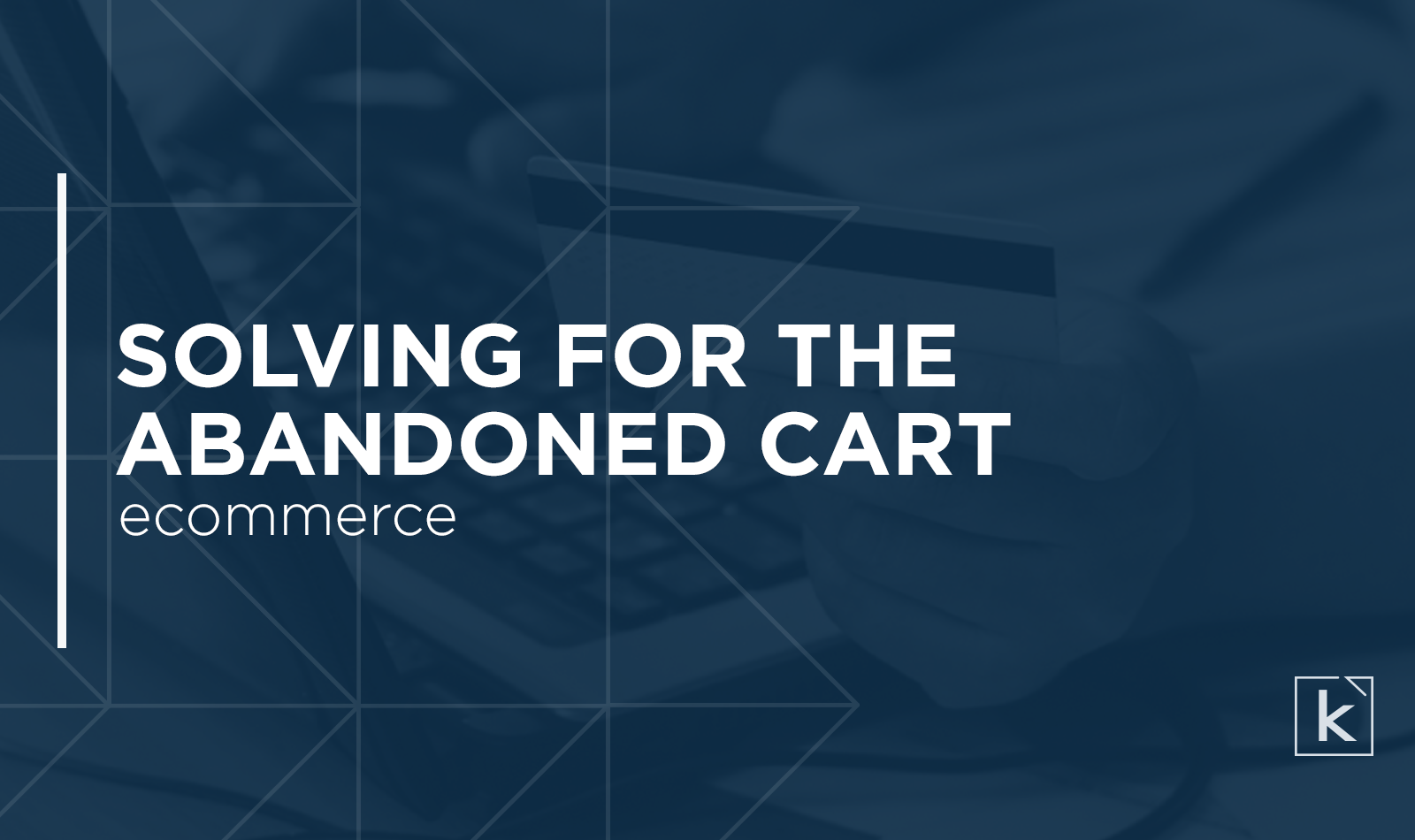
If you’ve ever shopped online, you’ve probably received several (but more likely hundreds) of abandoned cart emails. You know, a friendly reminder that you’ve left an item in your online shopping cart and just maybe, if you’re lucky, a little incentive to go through with the purchase.
Would it shock you to know that not every retailer has an abandoned cart email strategy in place? Because it’s true (more on that in part II).
Why you should care about abandoned cart email strategy
When a shopper browses any ecomm site, it’s natural for her to view and add items to the shopping cart—even if she’s not fully intending on completing the purchase. Regardless, this action shows the retailer there is purchasing intent. Should the shopper decide to leave the site or app without completing the purchase, an abandoned cart email can remind or even incentivize her to return and check out.
We’ve found the average cart abandonment rate typically varies anywhere inside the 55-75% range. For an unbiased view point (a.k.a. not from an organization offering marketing services), we’ll use the data that Statista has reported—and it’s staggering.
As of 2019, 69.57% of digital shopping carts and baskets were abandoned and the purchase was not completed.
So what can online retailers do to convince shoppers to come back and close the sale?
Why people abandon online shopping carts
To understand how you can improve the shopping experience so more people will complete the checkout process, you must first understand the main reasons why so many carts are abandoned in the first place.
Reason 1: Unexpected charges
The number one reason why shoppers abandon carts is because they encounter surprising extra charges, like shipping and tax fees. In fact, according to a study by the Baymard Institute, in 2018, 55% of shoppers asked said the reason they abandoned a cart was due to extra costs being too high. (Note: this study took responses from shoppers who had the intent to buy, not just browse.)
With Amazon Prime and other membership services popping up with constant free shipping offerings, shoppers have become maybe a little bit...spoiled. And we might not expect free shipping all the time, but it better not cost an arm and a leg—and there better be incentives to get free shipping.
Solution: Clearly communicate to shoppers that shipping and tax charges will be added at checkout. Consider a tool to estimate shipping and tax charges before checkout, if it makes sense. And if you don’t already offer free shipping, consider giving it to shoppers who spend at least $50 (or whatever makes sense for your offering). Just remember, no surprises!
Reason 2: User-unfriendly checkout process
Another major reason shoppers abandon carts is because the checkout process asks too much of them. Meaning, either they are asked to create an account and that’s not something they’re interested in doing, or they feel there are too many steps to go through.
In the same cart abandonment study from the Baymard Institute, 34% of shoppers said “the site wanted me to create an account,” and 26% claimed a “too long/complicated checkout process.”
Solution: Make it as easy as possible for shoppers to get through your checkout process. It sounds obvious, but you might be making a small mistake that could be costing you sales. If you’re forcing shoppers to create an account, maybe add an option for guest checkout or to quickly create one using Google or other social media integrations. To set expectations, give the shopper an indicator of how far along they are in the checkout process, and what to expect next.
Reason 3: Feelings of insecurity
With the rise of digital privacy, it’s more important than ever to ensure your customers feel confident in your site/app security. If there’s the slightest bit of doubt that you’ll keep their personal information completely private, they’re probably not going to submit credit card numbers.
In Baymard’s study, 17% of shoppers who abandoned their carts claimed it was because they “didn’t trust the site with their credit card information.”
Solution: Incorporate trust seals on your site and keep your SSL certificate up to date. Don’t give shoppers any reason to doubt your site/app security—or they’ll bail. Offer payment options (like PayPal and Apple Pay) for an additional layer of security. Tell your customers flat out their security is important to your company and explain what you do to protect it.
What to include in an abandoned cart email strategy
Now that you understand why shoppers leave carts in the dust, you can make some decisions to improve the chances of conversion on your site. You might also want to revisit that abandoned cart reminder email strategy—or create one if it doesn’t already exist.
In part II of this series, we audit the abandoned cart email strategies of several large online retailers. Stay tuned to find out which strategies we loved and which could use some reassessing.



